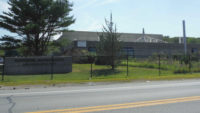In early March—amid subzero temperatures—project team members involved in environmental upgrades to a coal-fired generating plant in Michigan City, Ind., were waiting for the waters of Lake Michigan to warm up so they could resume barge shipments of preassembled components required to complete the dry flue-gas desulfurization of Northern Indiana Public Service Co.'s (NIPSCO) Unit 12. The $246-million project, sited near Lake Michigan's shoreline, reunites many of the firms involved in a similar undertaking at a NIPSCO plant in Wheatfield Ind., including Oakbrook Terrace, Ill.-based Graycor Industrial Constructors Inc., the project's mechanical contractor, and Chicago-based engineer Sargent & Lundy. This time, however, project particulars couldn't have been more different.
"While the Wheatfield station rests on 2,900 acres, our Michigan City station occupies only 114 acres," says Jason D. Klaich, director, major generation projects. "Of that, we have 31 acres for staging." It amounts to scant space for a project requiring nearly 300 tradesmen to install more than 30,000 lineal ft of pipe, 3,000 tons of ductwork plate and 4,000 tons of structural steel, all in support of erecting a pair of spray dryer absorbers, or scrubbers; a pair of pulse-jet filters, or baghouses; and pebble lime and hydrated lime silos, all critical to bringing Unit 12's sulfur-based emissions in accordance with federal regulations.
"From the outset, we looked for ways to facilitate economical construction at a site with little room for preassembly and the potential for weather delays, many from high winds that occur along the shoreline year-round," says Michael G. Vacek, senior project manager with Sargent & Lundy.
Hence the decision to preassemble components for circulating scrubber vessels, 24 baghouse modules, air slides and ductwork in a former 30,000-sq-ft dry storage facility some 20 miles from the site, then ship them via water on a 210-ft-long, 60-ft-wide barge, a solution that also allowed project team members to circumnavigate weight restrictions and other logistical challenges had components been shipped in smaller modules by truck.
The solution won instant approval from Worcester, Mass.-based supplier Babcock Power Environmental Inc., charged with supplying Unit 12's scrubbers, baghouses, lime silos and compressors, among other components. As a matter of routine, "we maximize shop fabrication and assembly based on shipping methods specified by clients," says Aires R. Pavao, Babcock project manager. "It's been our experience the approach reduces or eliminates fit-up issues in the field, accelerates the schedule and reduces overall project costs."
For Unit 12, fleets of trucks from numerous Babcock suppliers as far south as Texas fabricated and shipped components, each sized in accordance with varying load restrictions. Once components arrived in Port of Indiana, cranes placed some on outdoor fabrication tables and others on skates for preassembly within the fabrication facility.
Components for 45-ton, 60-ft-high, 30-ft-long, 20-ft-wide baghouse modules, for instance, arrived in C-sections—or halves—each hoisted onto a skate by a Manitowoc 4100 lattice-boom crawler crane.
In all, a team of 40 welders and mechanics preassembled 50% of components indoors and 50% outdoors, says Kevin Grooms, project director with Graycor. Due to space restrictions, crews worked outdoors to preassemble trios of circular steel components—with 30-ft-tall, 34-ft-dia cores, middles and tops for each of Unit 12's 90-ft-high reactor vessels.





Post a comment to this article
Report Abusive Comment